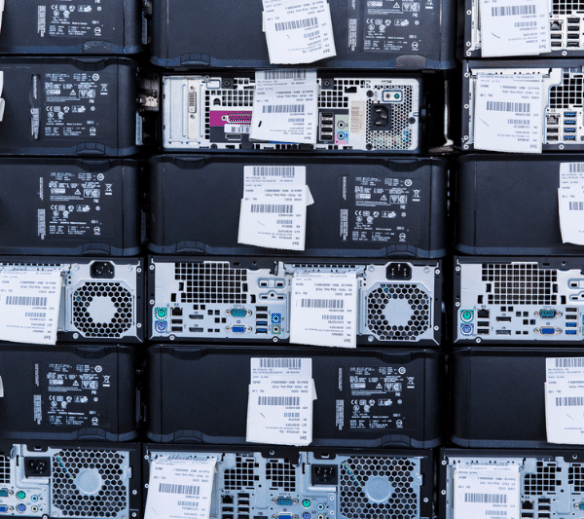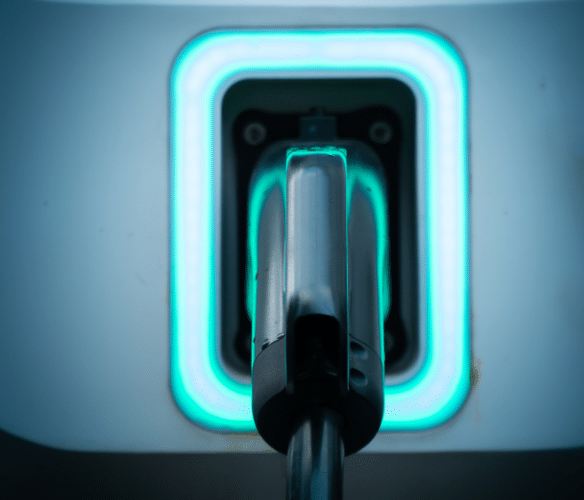
Eleanor Milner
Digital and eCommerce Assistant
October 29, 2021
With COP26 in full swing, it’s important we all take accountability in prioritising sustainable outcomes in our daily lives. Businesses of all sizes have the power to make a difference. With that in mind, here are 10 practical steps for small-medium businesses (SMB’s) which can help reduce your carbon footprint and reach your net zero targets faster.

1. Introduce a Cycle to Work Scheme
Not only will this have long term benefits on your employees mental and physical health, but switching just one trip per day from car to bike could reduce a person’s carbon footprint by about 0.5 tonnes over the year. Transport is the UK’s biggest pollution sector accounting for 27% of our greenhouse gas emissions, so encouraging the switch to cycling could be a key change in helping remove more cars from the roads.
DTP’s employee Cycle 2 Work scheme encourages our team to ditch their cars and utilise bikes to get to work. Leeds has recently benefited from ongoing Leeds City Council investment in cycle lanes with the latest development, South Leeds Cycle Improvement, taking the route to our doorstep – making cycling even more of a breeze! We’ve had a great uptake on the scheme and with recent fuel storages, more of our team are skipping the petrol station queues and seeing if cycling is a better solution. Our transition to hybrid working has also reduced our contribution to city traffic with working from home now being utilised by most of our staff. We’re currently collating information on our company-wide travel and will look to set a target to reduce our impact and carbon emissions year on year. Watch this space we’re wheely on a roll…
2. Minimise product and packaging waste
While waste itself is damaging to the environment, the processes used to discard unrecyclable materials can have an even larger detrimental effect. Therefore, being more mindful of resources by simply lowering the quantity of your packing, avoiding single-use plastics, and opting for recyclable materials can collectively decrease the harmful impacts of your waste.
One way we have significantly reduced our waste is by sending zero per cent to landfills achieved through using refuses services that turn unrecyclable waste into Refuse Derived Fuel. Additionally, we have worked with our partner HP to eliminate polystyrene from their packaging. As a material that is not yet widely recyclable, we took the initiative to take to our concerns to HP and try to find alternative ways of safely transporting devices but without creating unnecessary waste. We are delighted that HP have since created more sustainable packaging solutions and removed all polystyrene from their products.

-
3. Insulating the building
Non-domestic buildings are responsible for 9% of UK greenhouse gas emissions every year. However, investing in insulating your workplaces windows, walls, doors, roof, chimneys, and pipes is a simple solution in becoming more energy efficient thus reducing your carbon footprint. Equally, opting to insulate your workspace could prove advantageous in reducing noise pollution while keeping your workforce warmer during the colder months, thereby having a positive impact on employee comfort and productivity.
As part of DTP’s ongoing review of our business premises, we are building a project to evaluate our current premise and create an improvement plan based on the findings. We will look to minimise areas of our building where energy loss is identified to help reduce greenhouse gas emissions.
-
4. Switching to LED Bulbs
LED bulbs are not just the smart environmental choice, but a financial one too. LED bulbs are advantageously less energy hungry, longer lasting and thus result in fewer maintenance costs. According to CDP data you can make your money back in as little as a year. Plus, installing light controls to automatically switch or dim lighting could help additional savings too.
At DTP, we too are making the switch with over half of our lightning now being powered by LED bulbs. Currently implemented in our warehouse, we are due to expand this to our office environments as a long-term investment to reduce energy usage by as much as 50%. Results will be available within our annual sustainability report.

5. Talking to your supply chain
Challenging and collaborating your environmental efforts with others in your supply chain is a great way to hold accountability while inspiring new ideas and encouraging action. Perhaps revisiting your sustainability procurement procedure might avoid suppliers from negatively impacting your own carbon footprint.
Right from our inception, we knew that it was important to us that we work alongside technology brands with whom we share common values. We choose to work with HP Inc and Hewlett Packard Enterprise (HPE) exclusively as our technology partners and have benefited from their premium products and ethical business approach ever since. To the present day, HP Inc and HPE have been recognised as one of the world’s most sustainable companies. They have some of the most aggressive and comprehensive climate goals in the technology industry and HP recently came out on top in IDC’s Technology for Sustainability and Social Impact (TSSI) index framework, ranking HP Inc. the highest average score out of 29 technology companies. Furthermore, we’ve recently surveyed our distribution suppliers and are creating a supplier code of conduct. We value our partners and suppliers; we are all accountable to each other and have an ethical obligation to ensure we raise the standard and operate sustainably. We have been delighted to see that our suppliers are also taking their impact seriously and we will continue to work with them to ensure that we continue to collectively reduce our environmental impact.
6. Electrify your vehicle fleet
Over the length of a year, just one electric car on the roads can save an average of 1.5million grams of CO2. Electric cars emit fewer greenhouse gases with minimized air and noise pollution which is also accounting for their production and electricity usage. Cost can be a barrier to these new technologies, but by taking advantage of government incentives and tax benefits, businesses can reduce cost pressure and increase savings on fuel. Not to forget, electric vehicles have been said to be more reliable than an internal combustion engine so transitioning could amplify the efficiency and productivity of your fleet.
While at DTP we have already switched our company cars to hybrid, we are keen to take advantage of new innovations and are currently looking at moving our van fleet to electric too. Our current van fleet utilises Euro 6 engines which release fewer harmful gases. Indeed, on average a diesel engine produces up to 25% less CO2 than the petrol version, although other benefits include increased efficiency and reliability.

-
7. Installing a Smart Meter
Improve your energy awareness by installing a smart meter. Usually free, they can help take control of your energy use and cost. Increasing your awareness around your current energy consumption can make evaluating and thus combating unnecessary energy usage easier.
At DTP, we’ve reached out to our energy provider to conduct a full review of the current monitoring of our energy usage and are looking to install a smart meter in the medium term. Despite the fact our current supplier provides energy from 50% renewable sources, we know we can do more, so are looking to find a provider who can supply energy that is 100% renewable.
-
8. Renewable electricity or heating sources
For immediate results, switching to a low carbon alternative such as heat pumps or solar thermal is an effective option. While alternatives such as solar panels might not be readily viable for every business, they do remain a worthwhile and considerable option as CDP data highlight businesses who installed their own renewable source on average made back their costs within less than 10 years.
DTP are committed to finding a provider who can supply our energy using 100% renewable resources. We’re also seeking out ways in which solar power could be used at our premises to make further improvements in this area.

9. Energy usage
Lowering your energy consumption by just one degree has the power to make a difference. Encouraging employees to be more mindful of how they use workspaces could be key in becoming more energy conscious. For instance, ensuring the thermostat is set correctly, avoiding using air conditioning with open windows and doors or avoiding obstructing heat sources.
We’ve been reducing our energy consumption by investing in an upgrade of our heating system and have attached single thermostats to each radiator. This has proved both positive in terms of staff comfort and choice and saw a reduction of energy usage by 20%. Furthermore, we have reduced our use for air conditioning by 35% and plan to reduce this by another 30% by the summer of 2022.
10. Offset your carbon emissions
Admittedly, not all emissions are easy to tackle, so most companies operate both emissions reducing and emissions offsetting – in short, we need to do both. The idea behind carbon offsetting is that the carbon emissions generated through your business operations are calculated, then the equivalent amount becomes ‘paid off’ via a scheme that aims to remove carbon from the atmosphere, such as planting trees. With carbon offsetting, you can pay an external organisation to help avoid, reduce, or capture carbon elsewhere to balance and ultimately reduce carbon emissions you produce. Simultaneously, you would be funding green, socially conscious initiatives that benefit communities globally.
This links acutely with our goal and ambition to reach net zero by the end of 2024, through our DTP Zero Initiative. The commitment is driven by our passion and responsibility to facilitate and inspire positive environmental action across the tech industry for ourselves and our customers. As part of DTP Zero, one way we are working with customers to help reduce their carbon footprint is through DTP Zero Print. By partnering with HP, we can offer the planet’s most comprehensive and sustainable Managed Print Service (MPS) which works to offset your entire print fleet’s emissions for a constant five years. Promoting and encouraging customers to make more climate-conscious choices such as committing to DTP Zero Print, we help make achieving sustainability goals easier for everyone.

Small changes can have a big impact.
Hopefully, this has inspired your business to reflect upon your sustainability journey and consider what ways you could be progressing. Find out more about DTP Zero and how we’re addressing our sustainable impact.
Learn more
